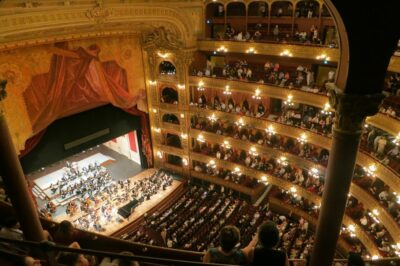Archived: Mexico’s and Brazil’s presidents and their relationship to the economy
Populists have been at the helm in Brazil and Mexico for two and a half years. In Brazil, the right-wing ex-military leader Jair Bolsonaro is in power, in Mexico, it is the left-wing politician Andrés Manuel López Obrador. This is an opportunity to take stock.
by Alexander Busch, Latin America correspondent for Handelsblatt and Neue Zürcher Zeitung
Mexico and Brazil are the two most important locations for German industry in Latin America. Around 340 million people live there, i.e. just over half the population of Latin America. They produce around just under two thirds of the region’s gross domestic product. While German companies in Brazil mainly supply the large local market, they use Mexico primarily as an export platform to the USA, but also worldwide.
Populist presidents have been in power in both countries for around 30 months. Although they are ideologically located at the two extremes of the political spectrum, they govern quite similarly in terms of content. Both the leftist López Obrador and the rightist Bolsonaro have little respect for the separation of powers, democratic institutions or the media. They have further divided their societies. Anyone who is not unconditionally in their favor is an enemy and defamed. They both prefer to govern with the military. Obrador has them building railroads in Mexico, managing ports and fighting drug mafias. Bolsonaro has brought 6000 military officers into state offices and companies. They are in the majority in his cabinet. Both politicians find environmental or climate issues a nuisance.
But they cultivate a different style: While Bolsonaro’s sociopolitical stance is sometimes clearly reactionary and anti-democratic – and thus constantly at the center of attention, even abroad – the leftist Andrés Obrador is also surprisingly conservative. But he does not advertise this, or his autocratic preferences, as Bolsonaro constantly does on social media.
In the pandemic, both failed similarly, albeit with different strategies: Both denied the pandemic, did not bother with vaccines for a long time and advised the population not to isolate itself. In Brazil, the government still paid generous social benefits in the first year of the pandemic and was able to mitigate the recession. In Mexico, the left kept the coffers closed and Mexico’s economy crashed.
Nevertheless, they differ significantly in their approach to the economy. In a nutshell, while Bolsonaro tends to be more free-market oriented, AMLO reaches into the mothballs of left-wing economic policies of the last century.
State-owned companies like Pemex are making an unexpected comeback. López Obrador has reversed the energy reform that was painstakingly pushed through. He is catching foreign companies that have invested in sustainable energies on the wrong foot. He is indifferent to hostile toward the private sector, and the state is once again intervening everywhere.
To be sure, Bolsonaro is by no means the liberal reformer he portrayed himself as during the election campaign, and he has hardly realized anything from his privatization program. But with a bit of luck, high commodity prices and an increasing inoculation of the population could bring Brazil’s economy back into normal mode by the end of the year. In Mexico, investors are likely to remain cautious because of the government’s adverse course, despite the boom in demand in the USA, from which Mexico’s industry has traditionally benefited as a supplier.
COVID-19 in Latin America
Development of case numbers in the region
Currently reported cases in the countries
COVID-19 vaccine doses administered
Vaccine doses administered by country





